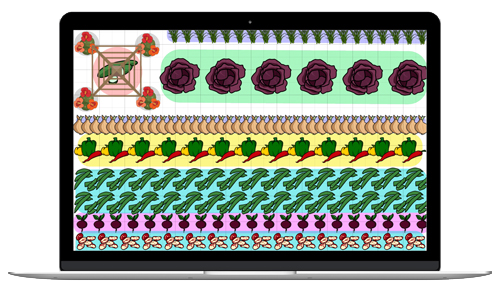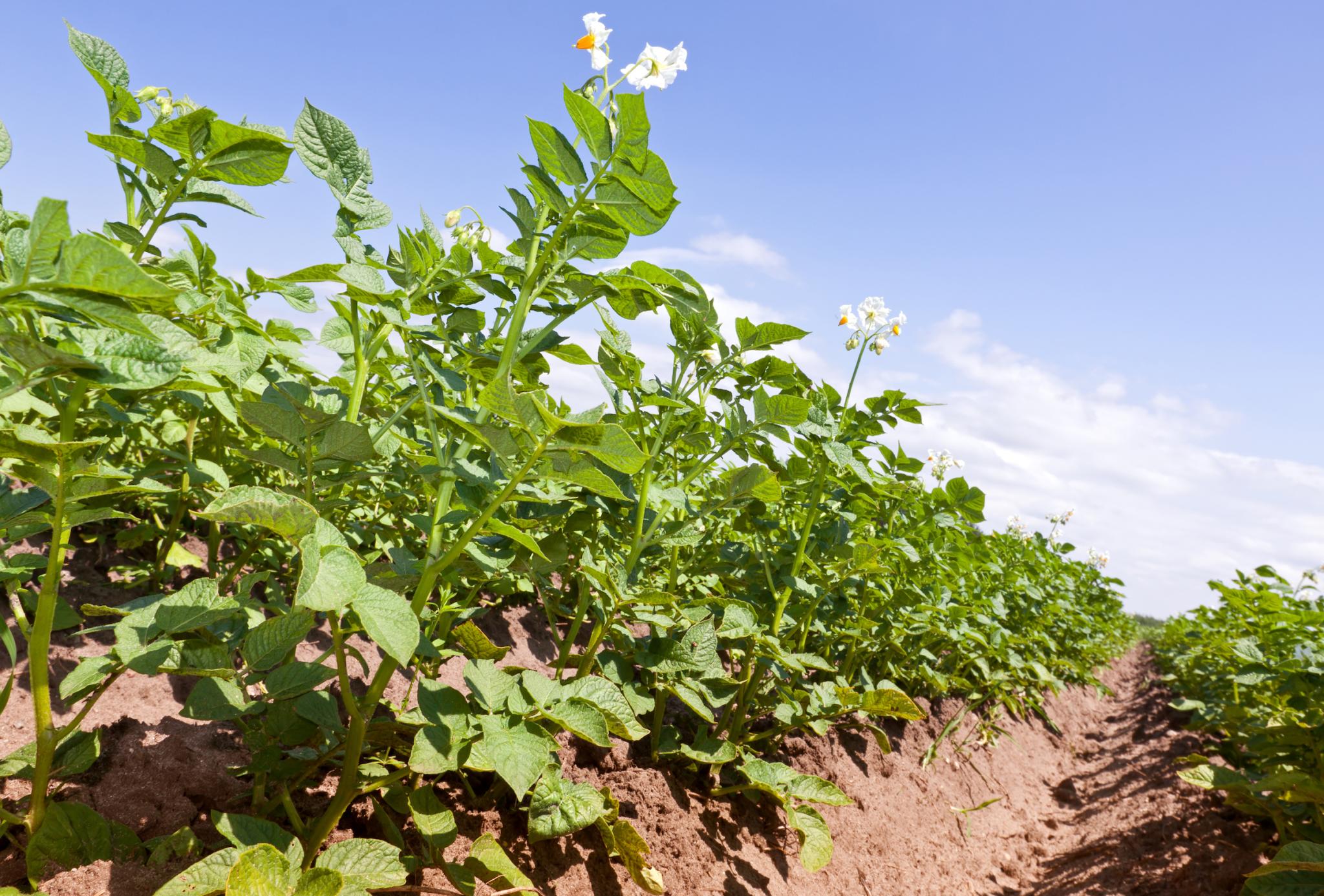
Planting, Growing, Harvesting, and Storing Potato Plants
The Almanac Garden Planner - Use It Free for 7 Days!
Plan your 2025 garden with our award-winning Garden Planner.
There are three classifications for potatoes based on when you harvest (vs. when you plant). If you harvest for storage, be sure to choose the right type:
- Early-season potatoes: first to be planted in early spring. Grow quickly (60 to 80 days), ready to harvest by early summer, tender flesh, thinner skin, store up to a few weeks.
- Mid-season potatoes (aka second early potatoes or “earlies”): mature in 80 to 100 days, typically lifted up from second half of summer, store up to a month.
- Late crops: mature in 100 to 130 days, best for storing, lasting 2 to 3 months in the right conditions; planted in August and harvested in fall.
Also, decide on the texture and flavor of your potatoes, and how you’d like to eat them:
- Dry-fleshed, mealy potatoes like russets and long white potatoes are used for baking, frying, and mashing. As mashed potatoes, they will not be gluey, and they will absorb gravy, butter or sour cream.
- Moist, waxy, round potatoes are great in soups, curries, frittatas, and salads because they don’t fall apart when cooked. You can pan-fry leftover boiled potatoes. When you mash waxy potatoes, they can become sticky.
- Red-skinned potatoes are often used for boiling or for potato salads.
Some popular potato varieties, such as ‘Yukon Gold’, fall somewhere in between truly waxy and mealy.
There are over 100 potato plant varieties! Go beyond the Idaho potato to explore more exotic and delicious options. See our article on choosing the best potato varieties!
Early Varieties:
- ‘Irish Cobbler’: tan skin, irregular shape (great heirloom potato for delicious mashed potatoes!)
- ‘Red Norland’: deep red skin, sweet, delicate flavor, great in potato salads or boiled
- ‘Mountain Rose’: red skin and pink flesh, resistant to some viruses
Mid-Season Varieties
- ‘Yukon Gold’: popular, tan skin and buttery-yellow flesh, mid to large size
- ‘Red Pontiac’: red skin, deep eyes (easiest and most adaptable red potato there is to grow)
- ‘Viking’: red skin, very productive
- ‘Chieftan’: red skin, resistant to potato scab, stores well
Late Varieties
- ‘Katahdin’: tan skin, resistant to some viruses
- ‘Kennebec’: tan skin, resistant to some viruses and late blight
- ‘Elba’: tan skin, large round tubers, resistant to blight and potato scab
- All Blue Potatoes
- ‘Fingerling Salad’ potatoes
Cooking Notes
Potatoes can be prepared in many ways: boiled, mashed, cut into pieces and roasted, french-fried, scalloped, made into dumplings or pancakes, grated into hash browns, and even brewed as alcoholic beverages.
Most potato dishes are served hot, but some are first cooked, then served cold, notably potato salad and potato chips.
ADVERTISEMENT
Several bugs enjoy potatoes. Controlling them will depend on the insect. The Colorado potato beetle is one of the most common, and is a yellowish-orange beetle with black stripes. Handpicking is one of the better options; also remove any of the bright yellow eggs that cling in clusters on the undersides of the leaves. Mulching with a thick layer of straw helps reduce populations, as does covering the plants in mid-season with row cover. The beetle can quickly develop resistance to many pesticides. Crop rotation can help future crops. Hope this helps!
We have grow potatoes for two year theres a chance for frost were we leave. We cover the potatoes top up with some soil we this hurt the potatoes?
Covering small (less than 4 inches tall) potato plants with a layer of soil will not harm them, as long as the soil is removed as soon as the danger of a frost has passed. For larger plants, use a clear plastic covering.
I have large 2 foot beautiful potato plants that I planted from a bag of grocery store potatoes that had got eyes. The plants are extremely healthy looking, but I am having a problem with them falling over. Is this normal, or am I over or under watering?
Potato plants can fall over for various reasons. If, however, they look very healthy, it likely isn’t due to over- or under-watering, nor to disease or extreme temperatures. Sometimes the plants just get leggy, such as if the plants are too crowded, don’t have enough light, received too much nitrogen fertilizer, etc. And, when they reach a certain growth stage, falling over is fairly normal. Be sure to keep hilling them at intervals with mulch (such as straw) or soil, as this helps to give them support and encourages more potatoes to form underground. See the article above for more information. Good luck!
What are the best seasons for planting potato in a zone with continental climate?
Is it fine to start planting potato seeds in may or june in Botswana?is the winter temperatures in Botswana suitable for growing irish potatoes (using true potato seeds)?
What would cause the bitter taste in a home grown potatoe?
Potatoes shouldn’t be exposed to the Sun, which will happen if you don’t hill up/cover them with soil. They’ll get sunburned, in which case they turn green and will taste bitter.
HELP! I have been planting potatoes for many years in my container garden; boxes and buckets. The last two years i have harvest potatoes that are so full of water that they can't be fried. When steamed and mashed they come our as if regular mashed potatoes were soaked in water. The also are sort of rubbery and don't mash. They chew like hard pieces of cucumber. I haven't done anything different than years before. I water every other day. I plant early. This never happened before.














